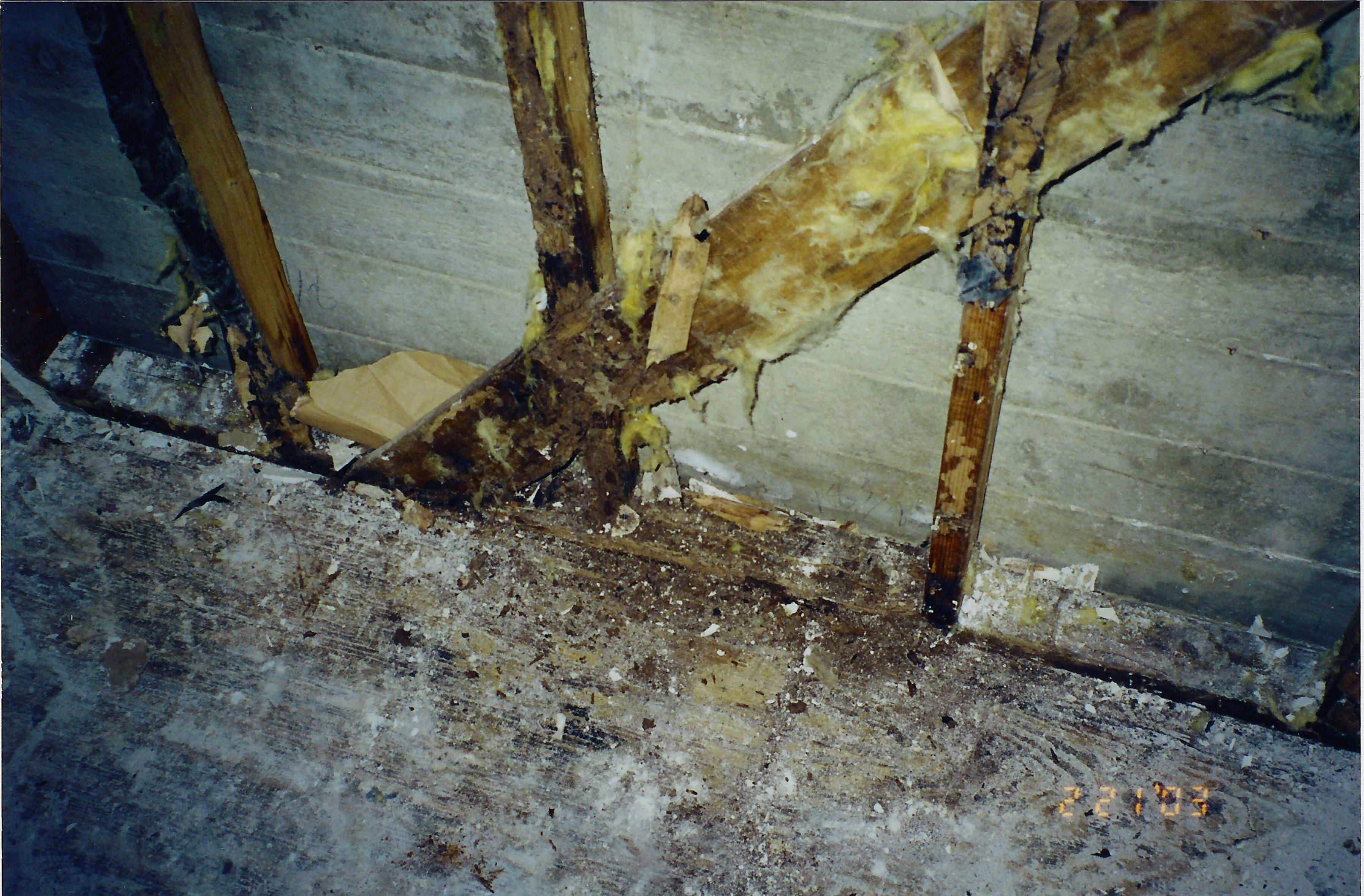Checking for Termite Infestation / Dry Rot Damage
Dry rot and pest damage can have a substantial adverse effect on a wood-framed structure’s response to earthquakes. Damage to structural elements may not always be as readily apparent as in the photo above from one of our litigation support cases. In some cases, fungus or termite infestation will be found only inside the wood element involved and will progress outward. By the time it is noticeable on the surface as staining or softening, the wood’s strength may already be significantly degraded. Therefore, if there is doubt, structural wood elements should be thoroughly reviewed to ensure they are in good condition.
Fungus and termite growth can occur where food (wood) and moisture are present. The source of the moisture may be a leaking pipe within a wall or a tear in the stucco backing paper. It is important to find the cause of the water intrusion, repair it and allow the remaining wood to dry.
Damage in structural elements can be detected by probing the wood with a sharp object, like a knife or an awl. This can be done by the homeowner. Try it on a large sample of wood so that you get comfortable with the feel of good wood. You will then be more apt to notice elements where the probe easily penetrates the surface. A structural element easily penetrated by the probe is likely to be infested, which leads to a reduction in its effective cross-section – thereby reducing its structural integrity. Depending on the structural significance of the elements affected, it may become necessary to retain a Structural Engineer to assess the structural impact of the infestation and determine if remedial steps are warranted before the damage, and the cost of reconstruction, escalate as in the case illustrated in the photo below.

